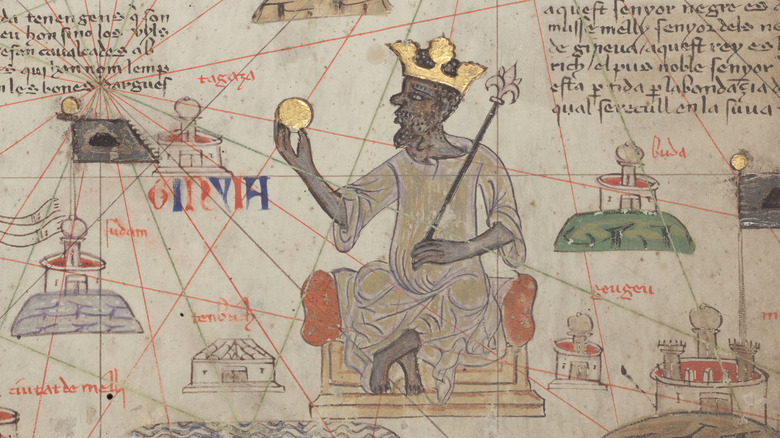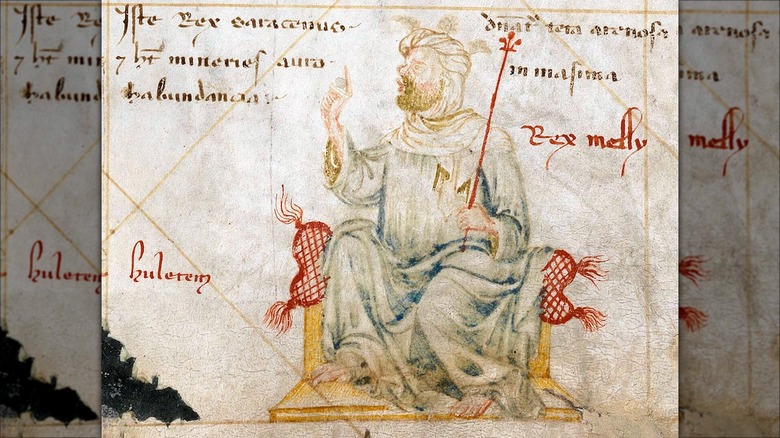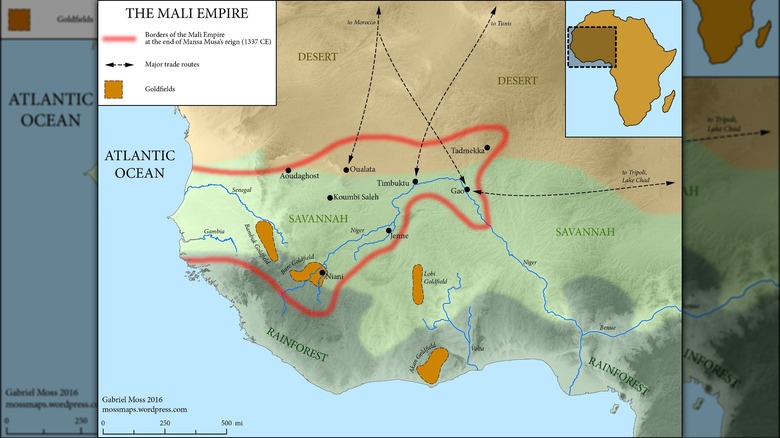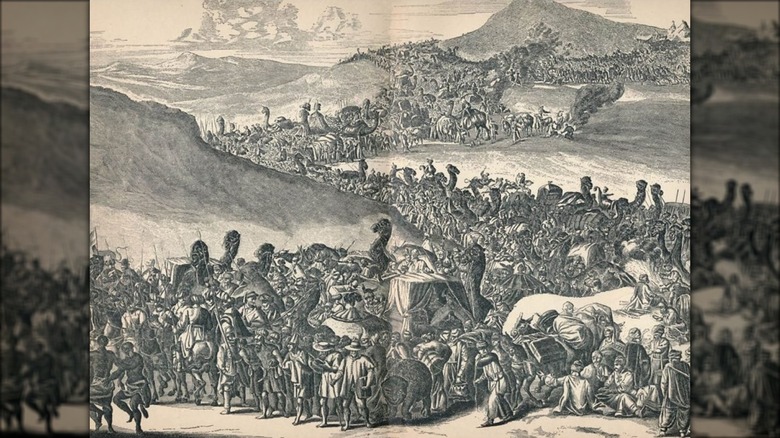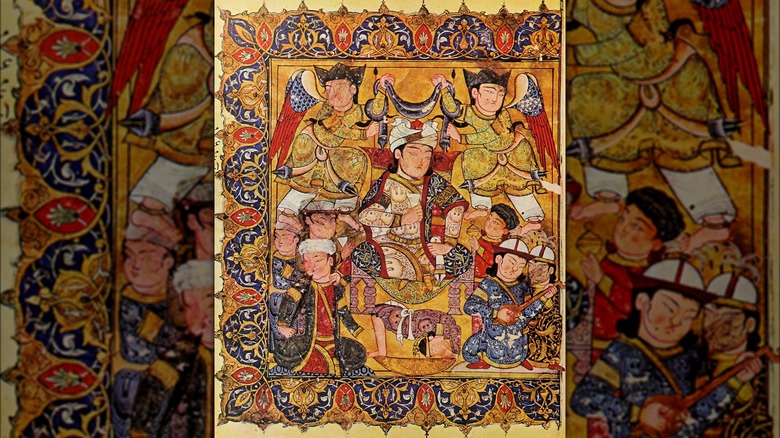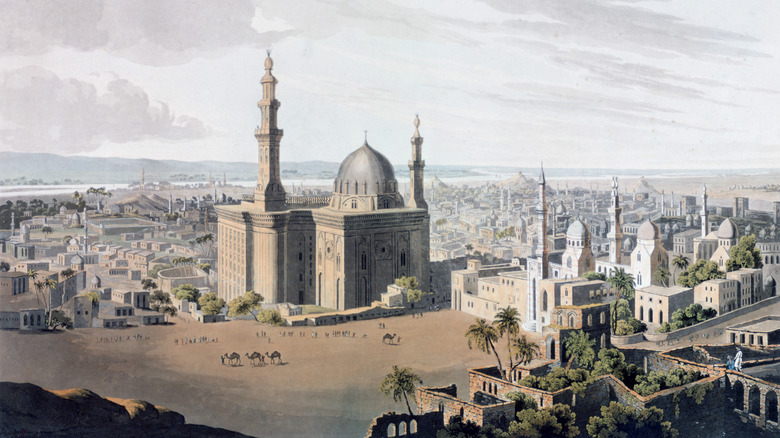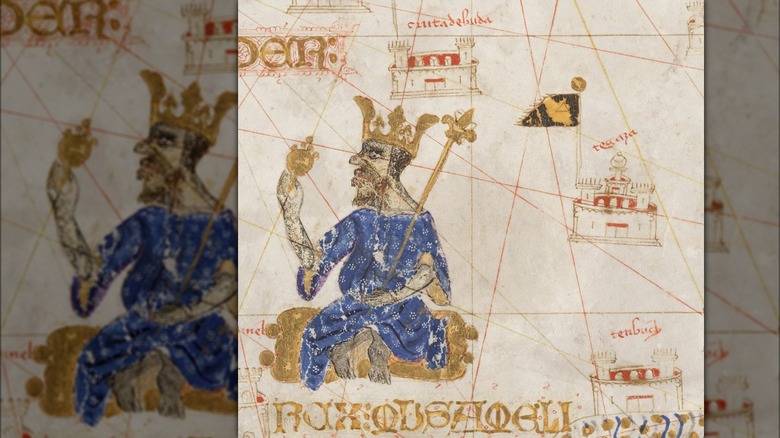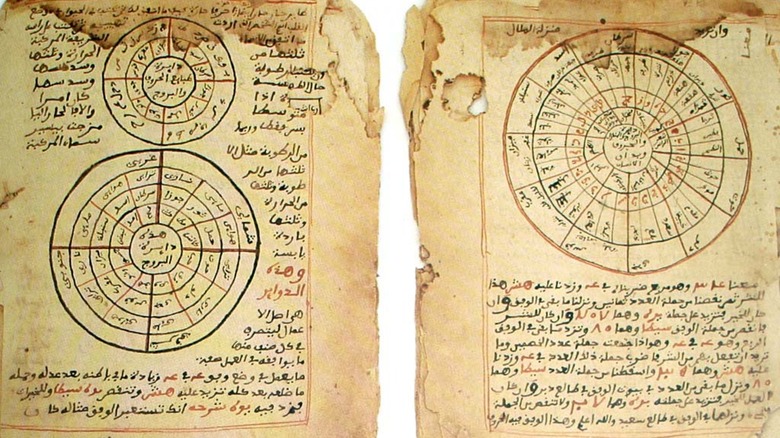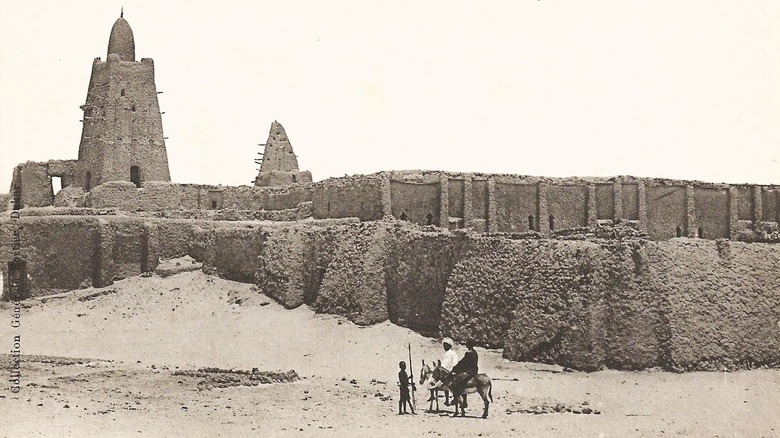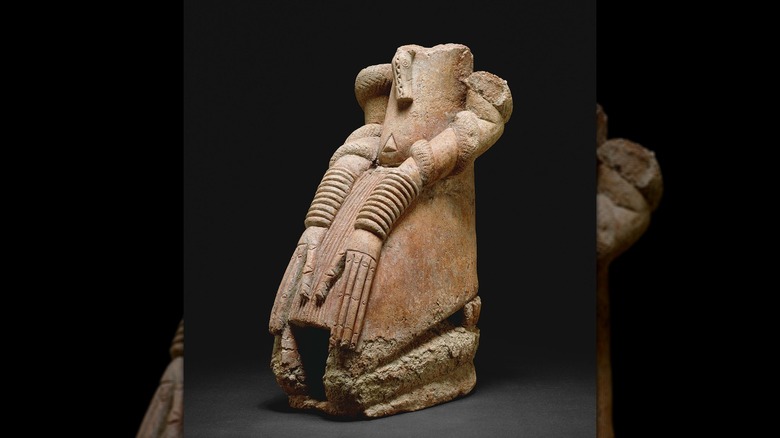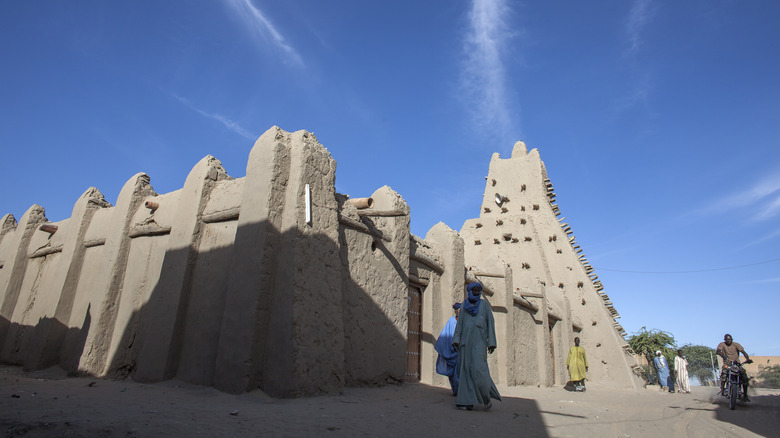The Hidden Truth About Mansa Musa: The Richest Man In History
Historians and economists can be real spoilsports sometimes, like when they explain how it's impossible to compare relative wealth across the centuries and that therefore we will never know who the richest person in history was. That said, there are ways of making educated guesses, like if, say, you are Mansa Musa, ruler of the Mali Empire in the 1320s, and you control the incalculable wealth of West Africa's gold mines.
But beyond that fact, when it comes to Musa ("mansa" was his title, like "king"), the hidden truths are really very hidden indeed. You would think that anyone who is a candidate for the richest man who ever lived would have a long paper trail, but if not for one notable journey, his memory might have faded in the minds of the wider world. There are so few near-contemporary sources that relate any information about his life and his reign that it's necessary to guess about many important aspects. Even those sources that do exist often contradict each other, or only one will contain an anecdote, while the others have no mention of a particular story at all.
Historians do not know exactly when Musa took the throne, or how old he was. It's also unclear when he died, with both 1332 and 1337 being considered the strongest contenders. So what do we know about the guy, at least as far as the mists of time will allow? This is the story of Mansa Musa, possibly the wealthiest man of all time.
The strange story of how he came to the throne
Most of what historians know about Mansa Musa comes from just two sources, both written decades after his death. One of these sources was written by the scholar al-Umari, who got his information from someone who knew Musa personally: Abu al-Hasan Ali ibn Amir Hajib. From this account, we learn how Musa allegedly came to the throne. The rule of Mali was not automatically handed down from father to son, like in many modern-day monarchies. Instead, it appears to have been a more complicated power struggle between royal brothers and offspring, and in at least one case the throne was handed down through the female line. Musa's father was never king, but he made it to the throne nonetheless.
Musa's predecessor is usually named as Mansa Abu Bakr II or Abubakari II, however, this was based on a mistranslation of a text. In reality, it's not known who reigned before Musa. In the story he related of how he came to the throne, he never names the former mansa. According to Musa, the previous mansa believed it was possible to cross the Atlantic Ocean — in the early 1300s — and sent a fleet of boats, before eventually leading an expedition himself. He never returned.
While this account is the only known one that mentions such a voyage, some people take the possibility of an African king making it to the Americas seriously. In 2000, the Malian scholar Gaoussou Diawara published a book that brought together all other possible evidence that Musa's predecessor made it across the Atlantic.
He ruled one of the largest empires in the world at the time
To be the ruler of Mali in the 1300s was no small thing. As seen above, it encompassed an area much larger than modern-day Mali and extended all the way to the west coast of Africa. Musa is supposed to have claimed that if anyone started walking from one end of Mali, it would take them a full year before they made it to the other side. While this was an exaggeration, it shows just how massive the empire was for the 14th century. At least one traveler recorded that a similar journey across Mali took him four months. In fact, of all its contemporaries, only the Mongol Empire was larger.
While it's known that the Mali Empire grew greatly around the time of Musa, it's not clear if the new territories were actually conquered by one of his predecessors. Some stories give credit to Musa's generals while he was away, and still others say Musa himself was there doing the conquering.
No matter what the truth is, Mali had only recently taken control of important cities like Gao and Timbuktu, and these conquests had huge repercussions for the empire's fortunes and importance. Not only did these new lands double the size of Mali, but they also added control of invaluable gold, copper, and salt mines.
He went on an epic Hajj to Mecca
The event in Mansa Musa's life that received far more attention than any other was his journey to Mecca, home to the Kaaba, and one of the holiest sites in Islam. As a Muslim, Musa was commanded to do the Hajj at least once, but his journey was far from that expected of the average hajji: By one estimate, it took as much as 12 years to plan. It's believed he traveled over 4,000 miles on his round-trip journey from Mali, and he did it in a style that shocked even other rulers of the era.
While most sources record that Musa began his Hajj in 1324 and returned the following year, there is evidence he could have started off as early as 1320, and that the whole journey might have lasted four or five years. Considering the retinue, distance, and effort involved, this doesn't seem all that outlandish a timeframe.
While some of the stories of the procession to Mecca may be exaggerated, it was clearly massive and opulent. It was said to have 60,000 men, some 12,000 of whom had been captured and enslaved in the years preceding the journey. All were dressed in the finest silks, and hundreds of men and camels were laden with more gold than can be imagined. The resulting caravan was allegedly so long that the front of it reached Timbuktu, around 800 miles away, before Musa had even left his palace. On the way to Mecca, the caravan stopped in Cairo, where it made a lasting impression.
He almost caused a diplomatic incident in Egypt
Meetings between world leaders can be fraught even today, and so they have teams of people to research and plan everything beforehand. But back when diplomatic rules weren't a simple Google away, there were bound to be misunderstandings. Unfortunately, despite the years of planning that must have gone into undertaking his Hajj, Mansa Musa still managed to have a diplomatic hiccup in Cairo.
Several sources mention the incident, although their details vary. What seems clear is that as a sovereign ruler traveling in such style, Musa expected to be treated as someone of equal power and importance to those he saw as his peers. In Egypt, this meant meeting with the Mamluk sultan Al-Malik an-Nasir. However, while they exchanged gifts and pleasantries, it seems Musa was not expecting to be told he must genuflect to the sultan by kissing the ground. As a monarch himself, Musa refused, saying he would only bow before God. Fortunately, the sultan let it slide, although he did pull rank by refusing to let Musa sit in his presence. Other versions say he did sit down, but only after being allowed to by the sultan.
Without knowing for sure which versions, if any, are most accurate, the overall impression to take away from this meeting is that while the two men liked each other, other rulers did not see Musa as the equal he felt he was.
He spent so much gold that it affected the Egyptian economy
While a king showing up with tons of gold to spend in your city seems like a great thing for locals, Mansa Musa actually had too much gold for the economy to handle. His opulent spending in Cairo had a disastrous effect on the price of gold in the area for over a decade. The chronicler al-Umari gives specific details about what happened: "When Mansa Musa came to Egypt in 1324, the mithkal of gold did not go below 25 dirhams, but from that time, its value dropped to 22. This situation has remained for 12 years because of the large amount of gold which they brought into Egypt and spent there" (via "Mansa Musa's Journey to Mecca and Its Impact on Western Sudan" by Tahar Abbou on ResearchGate).
How much gold are we talking about if it can change macroeconomic conditions that severely? According to one estimate, Musa and his caravan spent 15 tons of gold. And yet, they still managed to run out, and ended up borrowing money for the return trip home.
While stories indicate that Musa was generous with his gold, giving out alms and gifts, much of the spending may have been due to the fact that they were regularly cheated by merchants. Al-Umari writes, "Merchants of Cairo and al-Fustat have told me the profits which they made from the Africans, saying that one of them might buy a shirt or cloak or robe or other garment for five dinars when it was not worth one. Such was their simplicity and truthfulness that it was possible to practice any deception on them."
Musa's image became shorthand for the riches of Africa
The tales of the African king with tons of gold spread through the Mediterranean and captured the imagination of people at the time. Based on the evidence, cartographers were especially taken with Musa. For decades, the area of West Africa he was from was illustrated on elaborate maps of the known world with an image of a king holding a piece of gold. These included a 1339 Italian map and Spanish maps from c.1375 and 1413 (the latter is pictured above).
West Africa, Mali, and particularly Timbuktu became associated with gold in the European mind. Of course, since Europeans were willing to conquer to get that gold, this did not bode well for the future. The maps were not just meant to look nice or teach basic geography. By placing Musa there in all his splendor, it was saying, "This is where we need to go get the gold." Within a couple centuries, this would have devastating consequences for the area.
Five centuries after Musa was dead, European explorers would still hold a romantic view of Timbuktu, as this city is in the middle of nowhere and very difficult to get to, but worth it once you did, because of the gold and other valuables there. Musa's astonishing displays of wealth during his Hajj rippled through history and affected his country half a millennium later.
Musa's reign was instrumental in spreading Islam in Africa
Mansa Musa was a follower of Islam, with many sources noting how pious and devout he was. This was the reason he embarked on his Hajj in the first place, as The Fifth Pillar of Islam requires all Muslims who are financially and physically able to journey to Mecca at least once in their lifetime. But Musa's faith was more than just personal; his reign would greatly influence the spread of Islam in West Africa, and lead to Mali, and Timbuktu specifically, as one of the most important centers of Islamic learning in the world at the time.
Mali's location and wealthy of riches and natural resources made it a busy trading location. As traders from other areas came to Musa's kingdom, they interacted with followers of Islam, and many converted and brought their new religion back home, spreading it even further. Musa used his power to bring Islamic scholars to the country, as well as build the necessary infrastructure of mosques and Koranic schools, until learning the Koran became standard for children in Timbuktu.
One story tells how Musa brought thousands of women on his Hajj with him and slept with them regardless of whether they were free or enslaved. When he was informed that having sex with free women was against his religion, Musa was shocked that even kings had to follow this rule. Nevertheless, he immediately changed his behavior to abide by what Islam instructed.
He was constantly building mosques
Mansa Musa showed his devotion to Islam in many ways, but the one that stands out is his constant building of mosques. It was recorded that while on his Hajj, every Friday (Islam's holy day) that the caravan stopped in a small village, he would order a mosque built there. While logistics would imply these could not have been particularly permanent structures, Musa made up for that by building some in Mali that are still standing today or have been found in excavations.
While on the Hajj, Musa met the poet and architect Abu Ishaq al-Sahili and convinced him to return to Mali with the caravan. Then Musa put him to work building mosques even before they arrived home, stopping in Gao and demanding he build one there.
But the most famous mosque Musa built was the Djinguereber Mosque in Timbuktu (pictured). While it has been renovated over the centuries, it is still mostly as it was in his time, built of earth and other natural materials. It is still an active mosque today, with thousands of Muslims attending prayers there every Friday.
The women in his life may have had their own importance
There is not too much information about what life was like for the average woman in the Mali Empire, but there are some hints about how the women connected to Mansa Musa were more important than the ruler's regular female subjects. Records about political intrigue during the reign of Musa's son make clear that the main wife of the ruler was considered a partner to him. Assuming this was also true during the previous reign, Musa's favorite wife, Inari Kante, would have had real power. Another source says that Musa had Inari receive tributes from the representatives of some of his territories, which could be a sign of the honor owed to her as his wife.
Inari also accompanied Musa on his Hajj. While her personal retinue was much smaller than his, it still consisted of 500 servants or enslaved people. One tale from this journey shows Musa took his efforts at opulence far beyond gold. When in the middle of the Sahara, Inari was sad that she hadn't been able to bathe in ages, saying that she missed playing in the river back home. So, as a surprise, Musa had a giant pit dug and filled with water overnight so she and her servants could have a bath the next day.
There is at least one example of power being handed down through the mother's line in the Mali Empire, and with his own people, Musa was called Kanku Musa, which meant he was the son of Kanku, his mother. This also indicated the elevated status of royal women.
He attracted the best scholars to Mali
As Harvard professor Henry Louis Gates explained, "Before the Renaissance in Europe, there were in Timbuktu as many as 25,000 students and scholars coming from West and North Africa and the Middle East to study Islamic Law, theology and a range of secular subjects" (via "Mansa Musa's Journey to Mecca and Its Impact on Western Sudan" by Tahar Abbou on ResearchGate). Much of this was due to the efforts of Mansa Musa.
While not a university in the modern sense, the Sankoré madrasah was an important center of learning in Timbuktu. While on his Hajj, Musa was inspired by the schools and academics he encountered. While he brought back books on various subjects, in some cases, went a step further and convinced learned men like scientists, architects, and Islamic scholars to return with him to Mali. Soon, the Sankoré madrasah was considered world-class and many of its students went on to great success and renown. Musa also sent some of his subjects abroad to study, and they then returned to Mali to teach.
In addition to academic subjects, the madrasah became one of the most important places for the religious study of Islam. Timbuktu would continue to be the leader in the study of Islamic law in Africa for hundreds of years after Musa's death.
